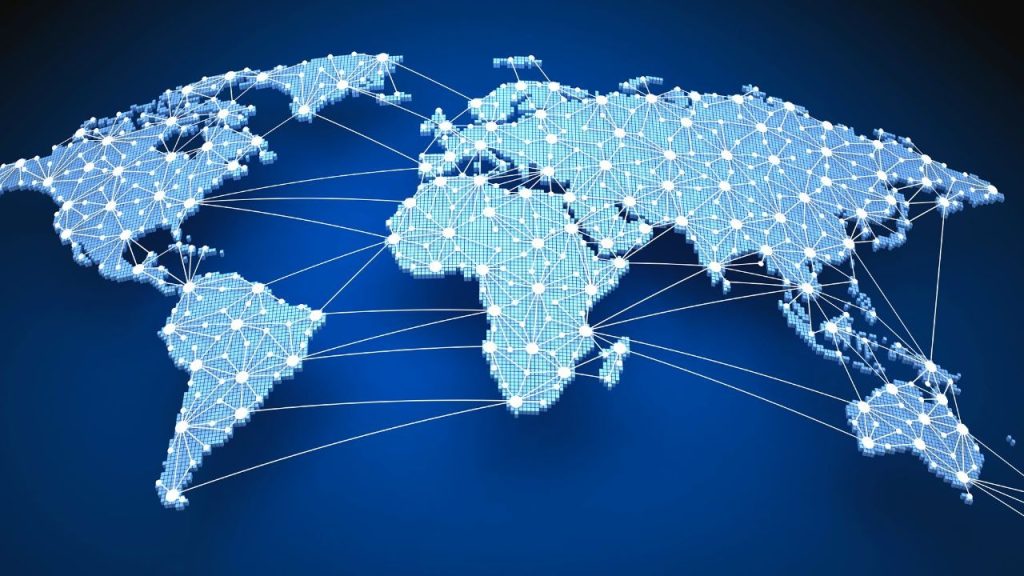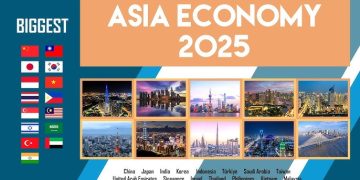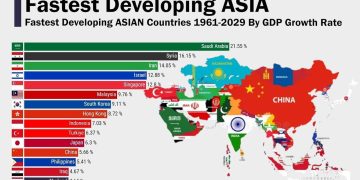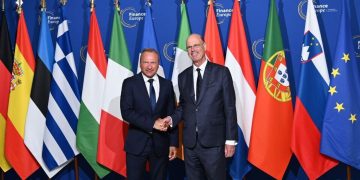I. Introduction: The End of Hyper-Globalization and the New Reality of Fragmented Capital Flows
For nearly three decades, global capital moved under a simple assumption: markets were integrating, borders were opening, and political alignment was gradually converging toward a liberal economic order. Cross-border investment surged, multinational supply chains expanded, and financial assets flowed with few geopolitical constraints. This era—often described as “hyper-globalization”—defined the world economy from the 1990s to the late 2010s.
That world no longer exists.
Today, global capital flows are increasingly shaped by fragmentation, geopolitical realignment, national security concerns, and competing economic blocs. Instead of a single integrated global market, we are witnessing the formation of several partially interconnected financial spheres—each with distinct investment priorities, regulatory standards, and technology ecosystems.
Capital is still moving, but it no longer moves freely. It is being redirected, filtered, or strategically deployed to serve national interests. Governments, once content to let markets allocate capital, now intervene more aggressively, defining what counts as “critical technology” or “strategic dependence.”
This long-form analysis explores the structural transformation of global capital flows:
- What forces are driving fragmentation?
- How are investors reallocating funds across regions and asset classes?
- Which industries are gaining or losing capital?
- How does this reshape global growth, risk, and power?
- And what might global investment look like in the next decade?
II. The Structural Drivers Behind Fragmented Capital Flows
1. Geopolitical Tensions and the Rise of Rival Economic Blocs
Geopolitical competition—especially U.S.–China rivalry—has become the dominant force shaping cross-border investment.
Where capital flows used to follow efficiency or expected returns, it now follows national security logic:
- semiconductor supply chains are being rerouted
- critical minerals are being treated as strategic assets
- foreign direct investment (FDI) is examined for security risks
- “friendshoring” replaces “offshoring”
- governments subsidize domestic technology sectors
The result: investment flows become politically gated.
The world is gradually forming three investment spheres:
- The Western bloc (U.S., EU, Japan, South Korea, Canada): focusing on secure semiconductor supply chains, advanced manufacturing, and AI.
- China-centered bloc (China, parts of ASEAN, Pakistan, some African nations): strengthened through Belt and Road financing, digital infrastructure, and industrial investment.
- The Non-Aligned or Fluid bloc (India, Middle East, Brazil, Indonesia, Africa): accepting investment from both sides to maximize leverage.
Capital must now navigate geopolitical filters that did not meaningfully exist 15 years ago.
2. Rise of Industrial Policy and State-Led Capital Allocation
The U.S. CHIPS Act, the EU’s IRA-equivalent policies, China’s industrial subsidies, Japan’s reshoring programs—all signal an unprecedented return of industrial policy.
Governments are no longer neutral observers; they are key investors.
This changes global capital flows in three ways:
- government subsidies distort investment priorities
- FDI increasingly targets strategic sectors rather than simply high-growth markets
- state-backed funds become dominant players, particularly in technology, defense, and energy
Sovereign wealth funds (SWFs), state banks, and public-private partnerships now channel hundreds of billions annually—far more than in the early 2000s.
3. Financial Decoupling and Regulatory Divergence
The regulatory landscape of global finance is diverging:
- the U.S. tightens scrutiny on Chinese listings and outbound investment
- China restricts cross-border data transfers and foreign access to domestic assets
- Europe deploys anti-subsidy investigations and investment screening
- emerging markets impose capital controls to stabilize currency volatility
The more regulatory frameworks diverge, the harder it becomes for capital to flow across regions.
4. Inflation, Interest Rate Volatility, and the Return of “Cost of Capital”
For a decade, global liquidity was abundant and cheap. Zero-interest-rate policies created the illusion that capital was frictionless.
That era ended abruptly with the post-pandemic inflation cycle.
Higher borrowing costs reshape capital flows through:
- decreased leverage in private equity
- reduced venture capital deployment
- increased attractiveness of bonds and money markets
- capital repatriation to the U.S. where yields are higher
- stress on emerging market currencies
Capital once chased growth at any cost; now it chases yield and stability.
5. Climate Transition and the New Geography of Energy Investment
Energy security and climate commitments redirect trillions in capital:
- from fossil fuels to renewables
- from traditional grid infrastructure to distributed storage
- from combustion engines to electric vehicles
- into critical minerals such as lithium, cobalt, nickel, and rare earths
As nations craft their own decarbonization paths, investment becomes more regional and more strategic—another form of fragmentation.
III. How Global Capital Flows Are Shifting: Key Patterns
1. FDI Is Becoming Regional, Not Global
FDI used to flow from developed countries into the developing world. Today the pattern is more regional:
- U.S. investment flows primarily to Mexico and Canada
- Chinese investment concentrates on Southeast Asia and Belt and Road partners
- Europe invests within the EU and selectively in Africa
Regionalism replaces globalization.
2. The Boom of “Friendshoring” Destinations
Countries benefiting from geopolitical diversification include:
- India
- Vietnam
- Indonesia
- Mexico
- Malaysia
- Poland
- United Arab Emirates
They attract investment precisely because they are not caught in the middle of great-power competition—or because they successfully play both sides.

3. The Retreat of Venture Capital From High-Risk Markets
VC funding is consolidating in three hubs:
- Silicon Valley
- Beijing / Shanghai / Shenzhen
- Bengaluru / Singapore
The age of abundant global venture capital is over. Funds are choosier, valuations are lower, and access to U.S. LP capital is more limited for non-allied markets.
4. Surge of Capital into “Strategic” Sectors
Across regions, capital is flowing into:
- semiconductors
- AI and cloud infrastructure
- defense and dual-use technology
- critical minerals and battery supply chains
- biotech and medical technology
- green energy and grid modernization
Meanwhile, capital is retreating from:
- traditional manufacturing
- speculative consumer tech
- real estate in oversupplied markets
Strategic sectors are the new gravity centers of global investment.
IV. Regional Case Studies: How Fragmentation Redefines Capital Flows
1. United States: Reshoring, Industrial Policy, and Safe-Haven Capital
The U.S. remains the world’s largest magnet for capital due to:
- high interest rates
- deep capital markets
- technology leadership
- political alignment with most major investors
Yet the composition of inbound capital is changing:
- more FDI into advanced manufacturing
- more government co-investment (via IRA/CHIPS)
- less private Chinese capital due to restrictions
- more nearshoring investment flowing into Mexico instead
2. China: Selective Opening and the Rise of Domestic Capital
China experiences more complex capital dynamics:
- outbound investment remains strong, especially in the Global South
- inbound FDI has become selective and highly regulated
- global investors face uncertainty around data rules, private sector policy, and geopolitics
However, China is increasingly relying on its massive domestic capital pool:
- state-owned banks
- sovereign funds
- large insurance and pension funds
China is becoming less dependent on Western capital—and more reliant on its internal ecosystem.
3. European Union: Strategic Autonomy and Industrial Rebuilding
Europe is reindustrializing after decades of outsourcing. Capital is flowing into:
- battery factories
- semiconductor fabrication
- hydrogen and renewable projects
- military and dual-use technologies
But geopolitical uncertainty and slower growth limit the scale of investment compared to the U.S. and Asia.
4. Middle East: The World’s New Power Investors
Saudi Arabia, UAE, and Qatar have become global investment engines.
Their sovereign wealth funds invest in:
- U.S. private equity
- Chinese technology
- Indian startups
- European industrial assets
They act as flexible capital bridges between blocs—almost a “third pole” of global finance.
5. India and Southeast Asia: Beneficiaries of Diversification
Thanks to demographic growth, political neutrality, and manufacturing expansion, India and ASEAN receive large inflows:
- supply chain relocation from China
- VC investment redirected from high-risk markets
- infrastructure and digital economy funding from both Western and Chinese investors
These regions are redefining themselves as alternative growth centers.
V. The Consequences of Fragmented Capital Flows
1. Higher Global Financing Costs
Fragmentation reduces financial efficiency:
- duplicated industrial supply chains
- parallel technology ecosystems
- higher government borrowing for industrial subsidies
- increased risk premiums in uncertain markets
The “peace dividend” that lowered capital costs for two decades is gone.
2. More Volatile Emerging Markets
With more capital repatriating to the U.S. and EU, emerging markets face:
- currency pressure
- bond outflows
- increased difficulty accessing dollar liquidity
Only countries with strong macro policy credibility attract stable investment.
3. A Return to Industrial Competition
Nations compete for the same:
- chip factories
- battery plants
- advanced manufacturing hubs
This creates inefficiency but also stimulates innovation.
4. Greater Concentration of Power in Sovereign Investors
SWFs, state banks, and public-private partnerships become dominant.
Private capital becomes less globally mobile, more domestically constrained.
VI. Future Scenarios: Where Will Global Capital Flows Go in the Next Decade?
Scenario 1: Managed Multipolarity
Capital flows fragment but remain interconnected.
U.S., China, and India emerge as the three main financial poles.
Regional ecosystems coexist without full decoupling.
Scenario 2: Full Geoeconomic Block Formation
Western and China-led financial systems separate.
Capital cannot move freely across blocs.
Investment becomes highly regional and politically filtered.
Scenario 3: Re-globalization Through Technology
AI-driven productivity boom lowers geopolitical pressure.
Digital assets and programmable money enhance cross-border financial integration.
Capital becomes globally efficient again.
Scenario 4: Global Crisis and Forced Realignment
Financial stress—such as sovereign defaults or a banking crisis—forces new coordination mechanisms.
Global capital flows reorganize around institutional reforms.
VII. Strategic Implications for Governments, Investors, and Corporations
For Governments
- Strengthen domestic capital pools
- Secure critical supply chains
- Build investment alliances within regional blocs
- Improve macroeconomic credibility to attract long-term capital
For Global Investors
- Incorporate geopolitical risk into portfolio allocation
- Diversify away from binary U.S.–China exposure
- Increase weighting in India, ASEAN, and Middle Eastern assets
- Focus on strategic sectors that benefit from government support
For Multinational Corporations
- Build multi-regional supply chains
- Hedge regulatory divergence
- Form joint ventures that align with national industrial strategies
- Prepare for parallel technology ecosystems in payments, cloud, chips, and data governance
VIII. Conclusion: A New Map of Global Capital
Global capital is not shrinking—it is being rewired.
Investment is now shaped by geopolitics, national security, climate strategy, and the search for economic resilience. The era of seamless globalization is giving way to a more complex, multipolar, and politically filtered financial landscape.
Understanding these shifts will define who wins and who loses in the next decade of global economic competition.
































